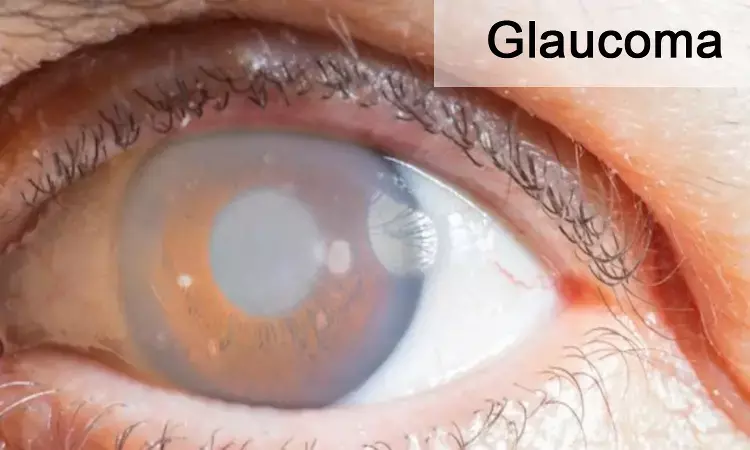- Home
- Medical news & Guidelines
- Anesthesiology
- Cardiology and CTVS
- Critical Care
- Dentistry
- Dermatology
- Diabetes and Endocrinology
- ENT
- Gastroenterology
- Medicine
- Nephrology
- Neurology
- Obstretics-Gynaecology
- Oncology
- Ophthalmology
- Orthopaedics
- Pediatrics-Neonatology
- Psychiatry
- Pulmonology
- Radiology
- Surgery
- Urology
- Laboratory Medicine
- Diet
- Nursing
- Paramedical
- Physiotherapy
- Health news
- Fact Check
- Bone Health Fact Check
- Brain Health Fact Check
- Cancer Related Fact Check
- Child Care Fact Check
- Dental and oral health fact check
- Diabetes and metabolic health fact check
- Diet and Nutrition Fact Check
- Eye and ENT Care Fact Check
- Fitness fact check
- Gut health fact check
- Heart health fact check
- Kidney health fact check
- Medical education fact check
- Men's health fact check
- Respiratory fact check
- Skin and hair care fact check
- Vaccine and Immunization fact check
- Women's health fact check
- AYUSH
- State News
- Andaman and Nicobar Islands
- Andhra Pradesh
- Arunachal Pradesh
- Assam
- Bihar
- Chandigarh
- Chattisgarh
- Dadra and Nagar Haveli
- Daman and Diu
- Delhi
- Goa
- Gujarat
- Haryana
- Himachal Pradesh
- Jammu & Kashmir
- Jharkhand
- Karnataka
- Kerala
- Ladakh
- Lakshadweep
- Madhya Pradesh
- Maharashtra
- Manipur
- Meghalaya
- Mizoram
- Nagaland
- Odisha
- Puducherry
- Punjab
- Rajasthan
- Sikkim
- Tamil Nadu
- Telangana
- Tripura
- Uttar Pradesh
- Uttrakhand
- West Bengal
- Medical Education
- Industry
Corneal Hysteresis significantly affects microvasculature in open-angle glaucoma

Corneal hysteresis (CH) values significantly affect the rates of optic nerve head whole image capillary density (wiCD) in open-angle glaucoma (OAG). The lower the CH values, the faster the rate of wiCD loss over time. The study was published in the journal Ophthalmology Glaucoma.
Corneal hysteresis is a biomechanical property associated primarily with the OAG development and progression along with the Intraocular pressure alterations. Decreased optic nerve head whole image capillary density is observed in OAG but the association between CH and wiCD is not known. Hence researchers conducted a study to establish the association between CH and rates of wiCD loss over time in OAG.
An observational cohort of 174 eyes with 122 OAG and 52 glaucomas suspect eyes from 112 patients over more than 2 years and 4 visits or more were taken into the study. An ocular Response Analyzer was used to obtain the baseline CH measurements. Linear mixed-effect models were designed to investigate the effect of CH, average intraocular pressure (IOP) during follow-up, and baseline visual field (VF) mean deviation (MD) on the rates of wiCD loss and cpRNFL thinning over time while adjusting for confounders. To evaluate the effect of baseline MD or average IOP during follow-up on structural changes for different values of CH, interaction between CH or baseline MD and average IOP during follow-up were included in the final models. The effect of CH, IOP, and baseline MD on the rates of wiCD loss and cpRNFL thinning over time were the primary outcomes of measurement.
RESULTS
- The average follow-up time was 3.9 years.
- In the multivariable model, non-African American race, higher average IOP during follow-up, lower baseline CH, lower baseline VF MD and higher numbers of IOP lowering medications were associated with faster rates of wiCD loss over time.
- For CH values 6 mmHg and 12 mmHg, every 1 mmHg increase in average IOP during follow-up was associated with 0.23 %/y faster and 0.07 %/y slower rates of wiCD loss over time, respectively.
- While every 1 mmHg decrease in CH was associated with 1.89%/y faster rates of wiCD loss for MD of -12 dB, it was associated with 0.81%/y faster rates of wiCD loss for MD of -3 dB.
Thus, the researchers concluded that faster rates of wiCD loss were seen with Lower CH values over time in OAG. They also observed that in eyes with lower CH, both higher average IOP during follow-up and more severe glaucoma damage at baseline were associated with faster rates of wiCD loss and cpRNFL thinning. They further added that CH can be a useful parameter for risk assessment of glaucoma.
To read more, click here: 10.1016/j.ogla.2022.08.010
Mohammadzadeh V, Moghimi S, Nishida T, et al. Effect of Corneal Hysteresis on the Rates of Microvasculature Loss in Glaucoma [published online ahead of print, 2022 Aug 19]. Ophthalmol Glaucoma. 2022; S2589-4196(22)00160-0.
BDS, MDS
Dr.Niharika Harsha B (BDS,MDS) completed her BDS from Govt Dental College, Hyderabad and MDS from Dr.NTR University of health sciences(Now Kaloji Rao University). She has 4 years of private dental practice and worked for 2 years as Consultant Oral Radiologist at a Dental Imaging Centre in Hyderabad. She worked as Research Assistant and scientific writer in the development of Oral Anti cancer screening device with her seniors. She has a deep intriguing wish in writing highly engaging, captivating and informative medical content for a wider audience. She can be contacted at editorial@medicaldialogues.in.
Dr Kamal Kant Kohli-MBBS, DTCD- a chest specialist with more than 30 years of practice and a flair for writing clinical articles, Dr Kamal Kant Kohli joined Medical Dialogues as a Chief Editor of Medical News. Besides writing articles, as an editor, he proofreads and verifies all the medical content published on Medical Dialogues including those coming from journals, studies,medical conferences,guidelines etc. Email: drkohli@medicaldialogues.in. Contact no. 011-43720751




